Papplewick Pumping Station
Papplewick Pumping Station was constructed to supply fresh water to the City of Nottingham after it rapidly expanded during the 19th century. The station originally used two steam engines manufactured by James Watt & Co to pump groundwater from wells bored into bunter sandstone. The engines were retired and replaced with electric pumps that still supply areas of Nottinghamshire. The historic site is now a working museum under the care of a trust and holds regular steam days showcasing all engines in its collection. It is a must-see industrial heritage site and a fun day out for all.
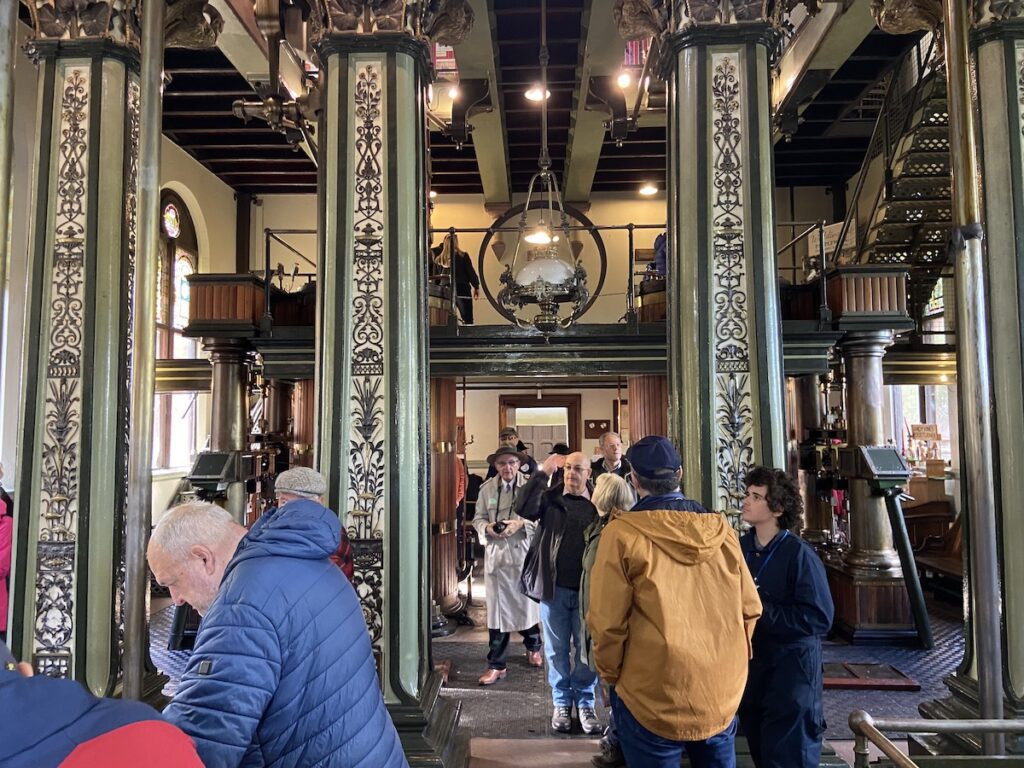
Key info
| Location | Rigg Ln, Ravenshead, NG15 9AJ |
| County | Nottinghamshire |
| Completed | 1884 |
| Engineer | Marriott Ogle Tarbotton |
| Maintained by | The Papplewick Pumping Station Trust |
| Heritage category | Scheduled Monument Listed Building Grade II |
Visiting guide
Free car park
Café
Toilets
What can I expect when visiting Papplewick Pumping Station?
There is a lot to see at Papplewick Pumping Station. Unfortunately we cannot fit it all into one guide and so we have focused on the main attractions and other artefacts of interest.
As you head through the front gate, notice the superintendents house that was erected in 1883 and is a Listed Building Grade II. The house is a stark reminder that management of the site was a permanent commitment. 14 men were required to operate the station 24 hours a day, which included 4 tenters who looked after the beam engines and 4 stokers who were responsible for the boilers.
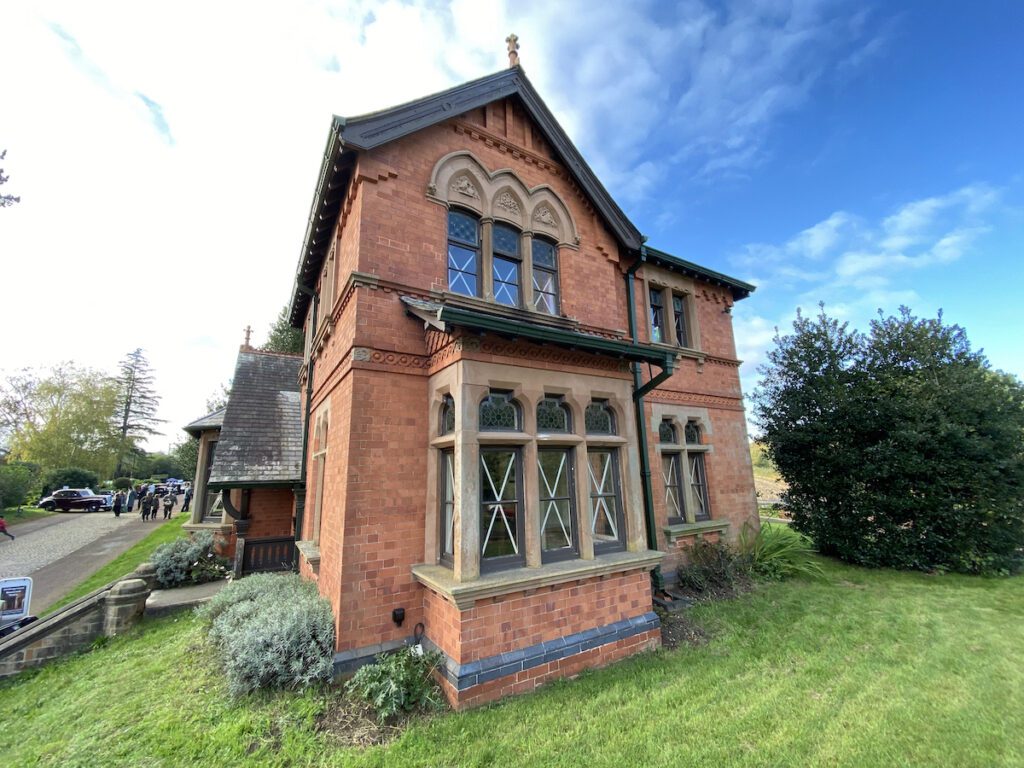
The staff all lived on site and worked rotating 8-hour shifts. It was a job for life and created a small self-contained community that left the station only on special occasions or for essential supplies.
Head to the front entrance of the main engine house, a beautiful Grade II listed building in the Gothic Revival style. Notice the ornate carved wooden porch and adorned with a stone eagle.
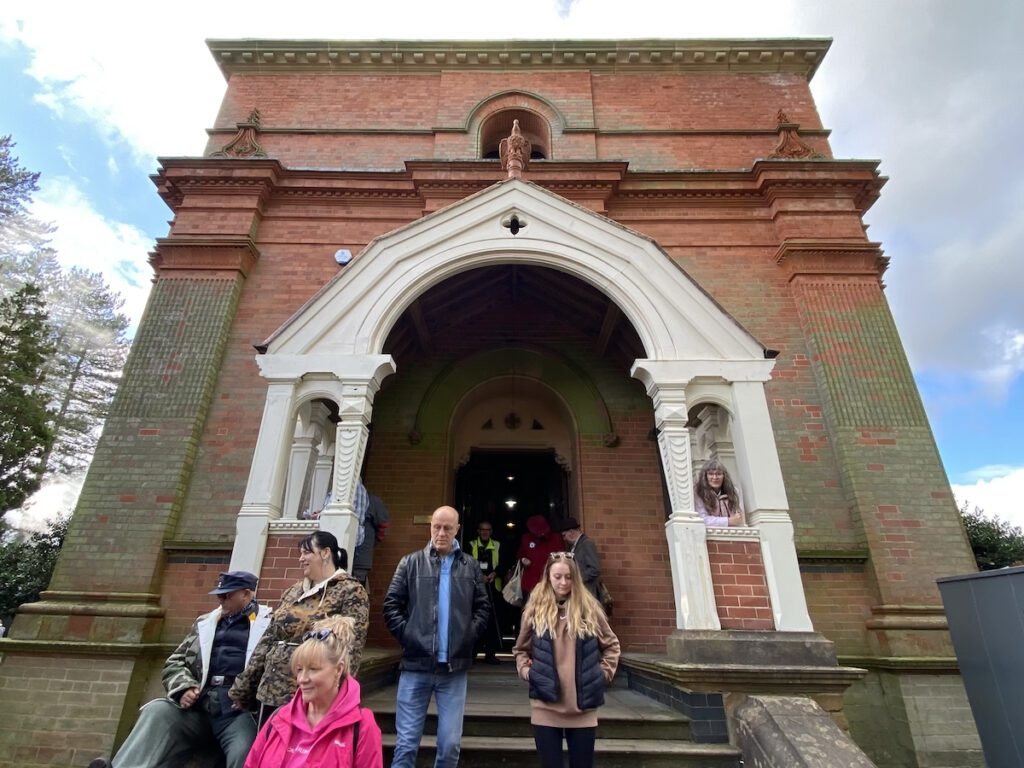
The main engine house contains two rotative beam engines made by James Watt & Co in 1884. It has decorative features such as ornate cast iron columns and stained-glass windows. It is amazing to think this was never meant to be seen by the public when the station became operational.
Head to the mezzanine floor for a view of the engine cylinder tops where engineers repack the piston rod glands. The piston rods are attached to the beams above by a parallel motion linkage, which was invented by James Watt with pride. The linkage keeps the rods near vertical and converts their motion into the curving arc motion of the beams, each weighing 13 tones.
Each engine produces 140 horsepower and was capable of pumping 1.5 million gallons of fresh water a day from wells over 200 feet below. The engines are still operational to this day thanks to the high-quality engineering of the manufacturers and the dedicated care delivered by the pumping station trust, which was formed in 1974.
Steam is provided by six modified Lancashire boilers that were made by W & J Galloway & Sons in 1883. They are encased in brick to conserve heat and supplied steam at 50 psi with each boiler holding 15,000 litres of water. Each boiler has two fire boxes and consumed about 2 tons of coal per day.
Around the side of the engine house is one of three air vessels. They were used to smooth out fluctuations caused by the reciprocating motions of the pumps that could cause damage in the long term. This was done by compressing air inside the vessel as water came from the pump, then the air expanding between pump strokes smoothing out the flow.
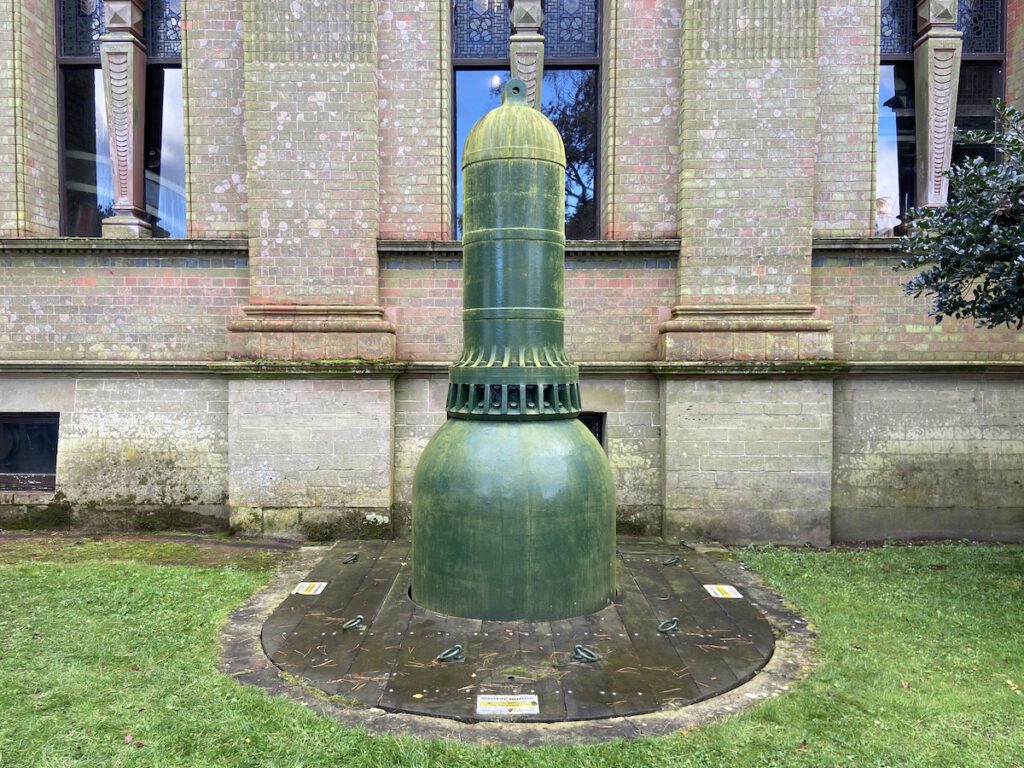
On display is a triple expansion steam engine made by Glenfield & Co. in 1897 to supply hydraulic power at Stanton Ironworks near Ilkeston. The engine was dismantled in 1979 having been out of use for some years before undergoing restoration that was completed in 1997.
The engine operates by using steam three times as it passes through a high, intermediate, and low-pressure cylinder before exhausting. This method extracts the maximum amount of energy from steam with less coal consumption pumping 348 gallons of water per minute
As you pass by the chimney, notice the collection of cast iron markers that would have been used by the Nottingham Waterworks Company and the Nottingham Corporation Water Works to mark the location of hydrants and stop valves on public streets. The company was setup in 1845 after an amalgamation of three previous private suppliers before it was taken over by Nottingham Corporation starting in 1879.
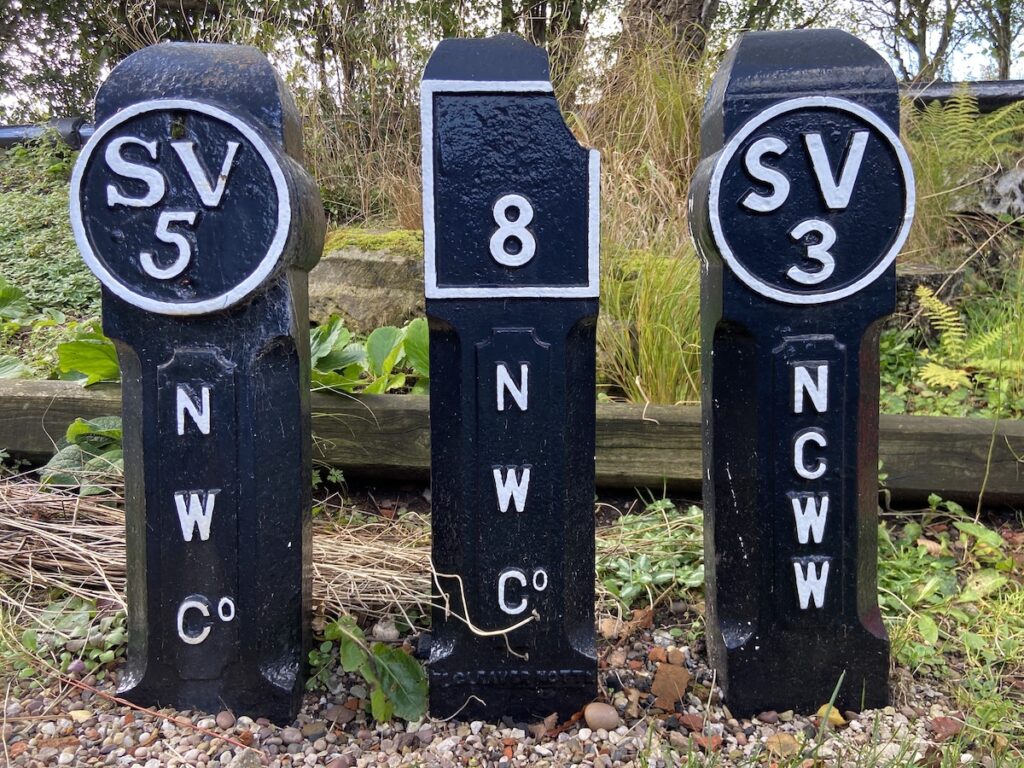
Head to the warehouse for a view of the 1922 winding steam engine made by Robey & Co for Linby Colliery, which was located 3 miles away and provided coal for Papplewick Pumpint Station. On steam days, the engine runs at a speed that was used by miners to ride up from and down to the mine; however, it would have run faster to wind coal. It was in service for 66 years until the colliery closed in 1988.
The engine is the only two cylinder, or ‘Duplex’ colliery winding engine still running on steam in England and the only winding engine made by Robey & Co still running on steam worldwide. It worked at a steam pressure of 120 psi and produced 1300 horsepower when winding coal in skips with a 65 tonne pay load. The wire rope ran from the drum over the headstock, and wound a coal skip up a shaft 220 yards deep. Also on display is a boiler made by Danks of Netherton with a coal conveyor belt in the shed opposite the toilets.
No visit is complete without a ride on the miniature railway!
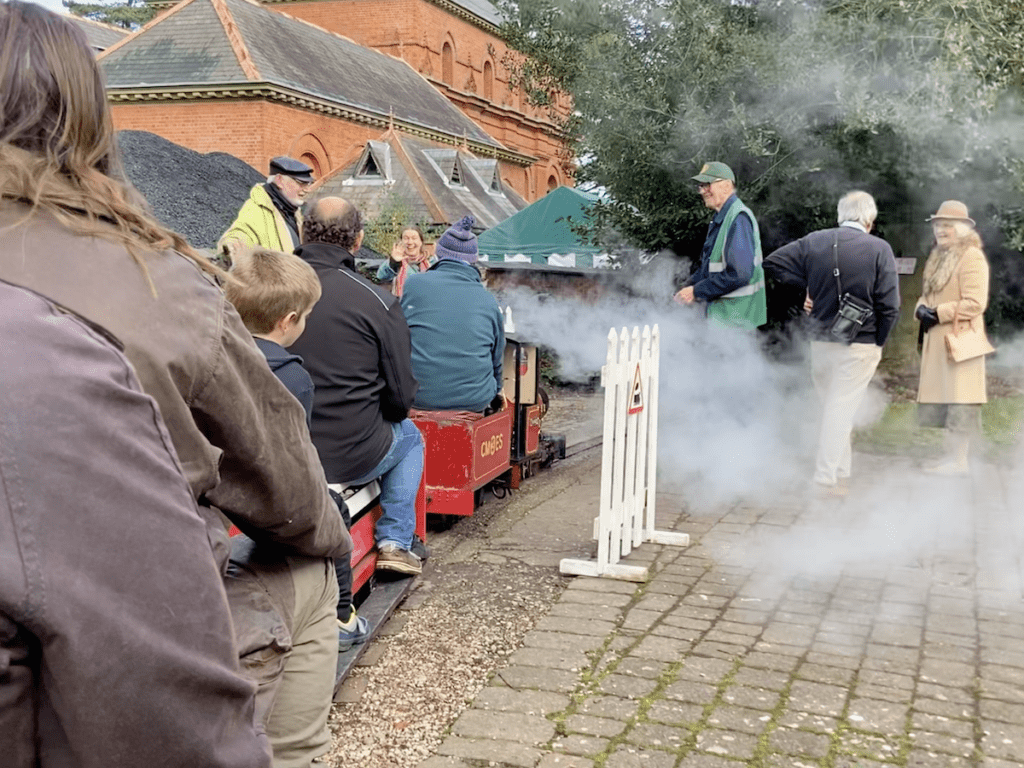
As you walk around the ornate pond in front of the engine house, take note of the pumping rod resting on its side. This would have been attached to the beam engines travelling up and down the boreholes pumping out groundwater.
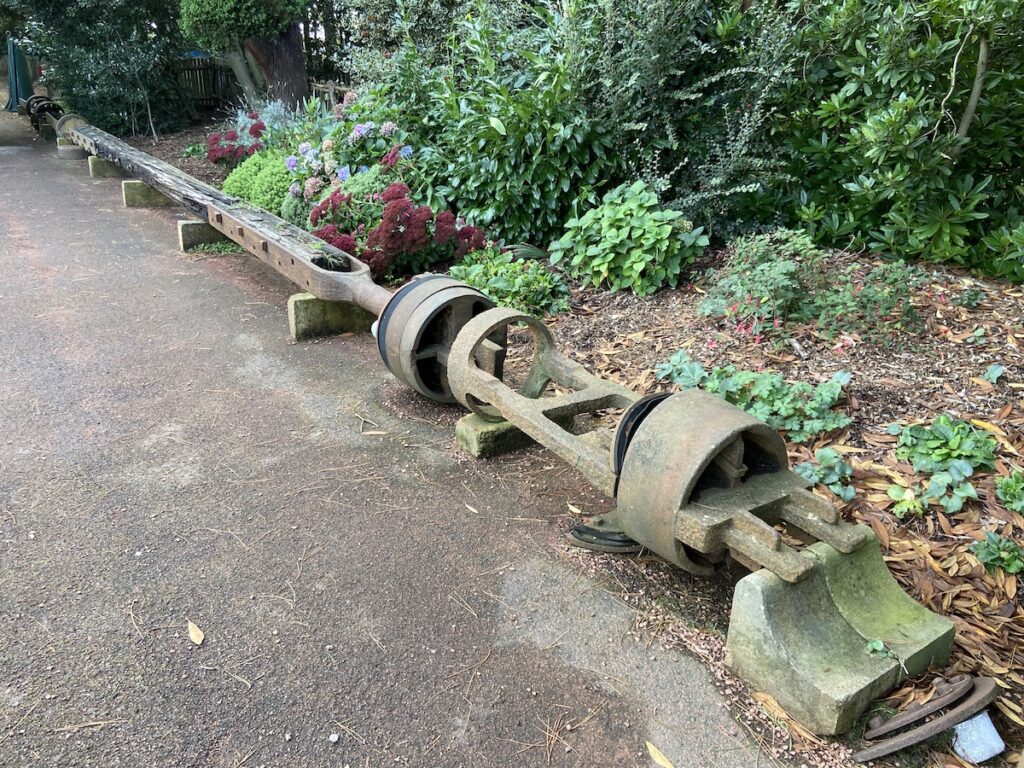
Next to the pond near the front gate is the original pilot well. This was dug 190 feet into the bunter sandstone in 1882 to check how much water was available. This effort was soon rewarded with over 1.3 million gallons per day. The pilot well was decommissioned after the permanent wells below the engine house became operational.
Next to the well is the building housing the modern electric pumps that replaced the steam engines in 1969. They still pump enough water for the daily needs of 8,200 families across the Ravenshead and Newstead areas of Nottinghamshire. Booster pumps inside the building push water from Papplewick to another local reservoir.
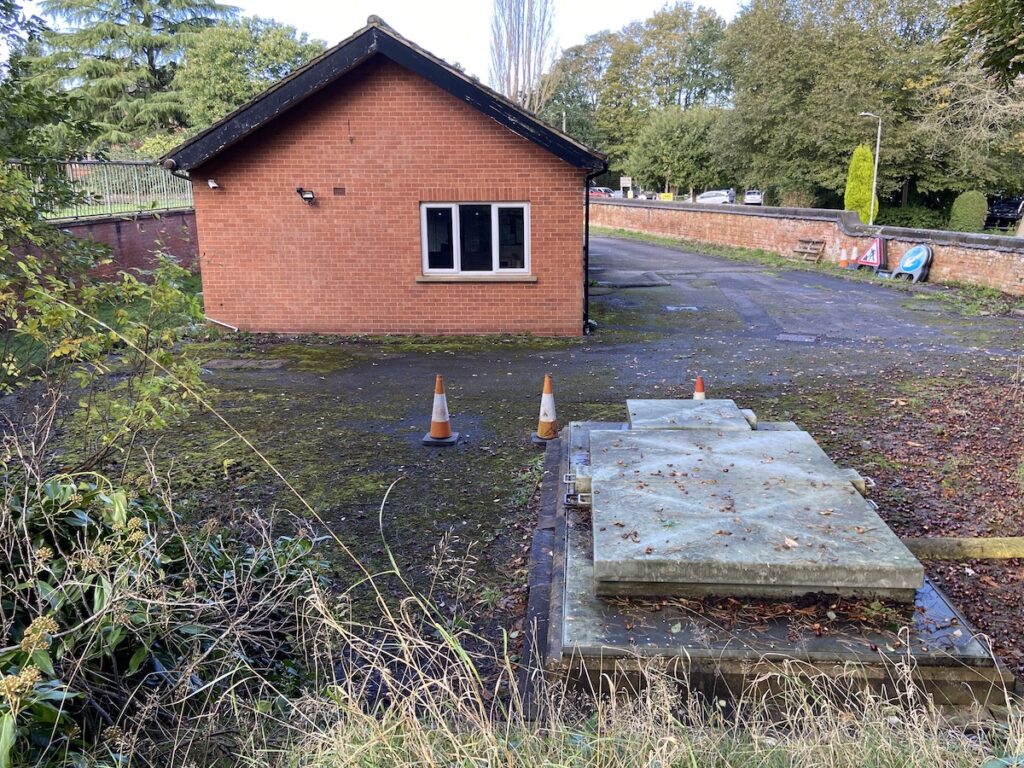
The gardens at Papplewick are beautiful and careful maintained by a dedicated team with a wide collection of trees and plants. Take your time enjoying the lush greenery and fresh air. We were delighted to find an original lamp post produced for the Nottingham Corporation Lighting Department.
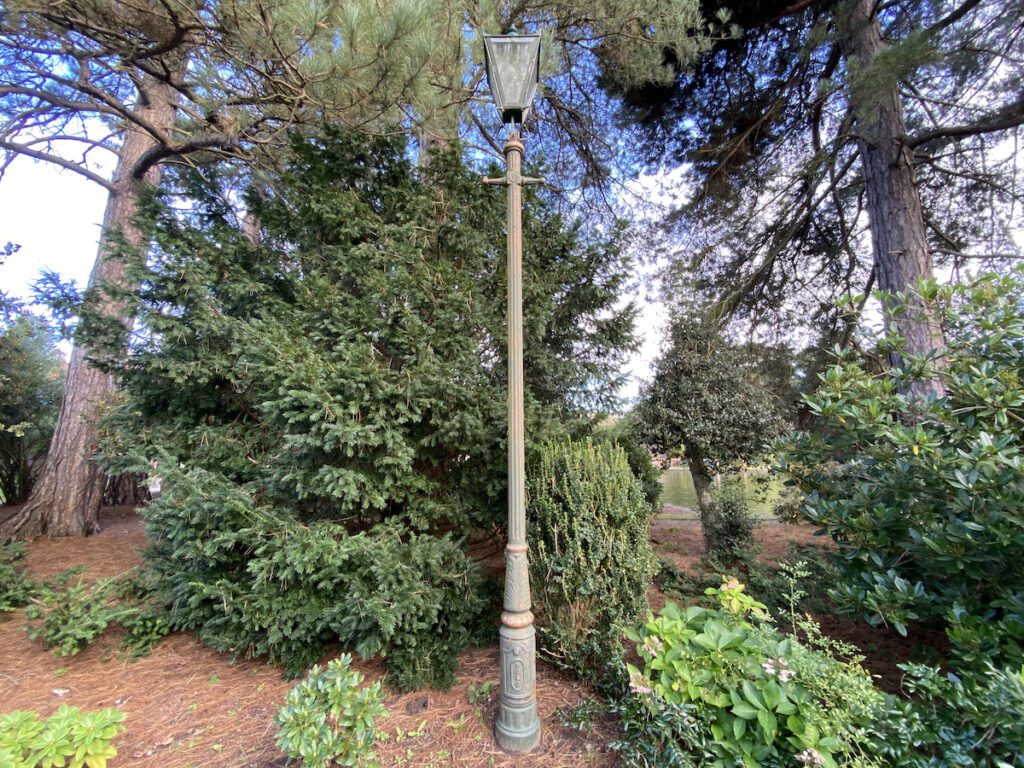
There is so much more to be discovered at Papplewick, and you will find plenty of things to do and people to meet during one of their steam days. Check their website for their event calendar.
How long does it take to visit Papplewick Pumping Station?
If you are visiting Papplewick Pumping Station on a steam day, you will need at least 3 hours to see everything. The site usually has other attractions during steam days such as 1940s weekends, classic cars, or a Christmas market. You can easily make a day out of your visit.
If your visit does not fall on a steam day, you will still require at least 2 hours to see the site at your leisure.
Does the Papplewick Pumping Station offer food and drink?
Yes, the site has a café.
How do I get to Papplewick Pumping Station?
Papplewick Pumping Station is a remote location; therefore, travelling by car is the only feasible option. The site contains a small car park; however, you may need to park on the grassy verge of Rigg Lane if visiting on steam days.
History of Papplewick Pumping Station
1879 – An underground reservoir was constructed near Papplewick by the Nottingham Waterworks Company to store water from Bestwood Waterworks. The reservoir was designed by Thomas Hawksley, one of the most prolific engineers of Victorian water supply systems. The company was then taken over by Nottingham Corporation to consolidate the local water supply under public ownership that accelerated an expansion scheme led by Marriott Ogle Tarbotton, the borough surveyor. Attention was then directed to exploiting groundwater stored in the bunter sandstone underneath Papplewick.
1880 – The first well is excavated at Papplewick to a depth of 275 ft (84 m).
1882 – A pilot well is excavated to check how much water was available.
1884 – The second well is excavated also to a depth of 275 ft (84 m). The engine house, boiler house, workshop, and chimney were constructed to the design of Tarbotton. The engines are installed and brought into operation.
1906 – The underground reservoir was decommissioned after a crack was discovered due to subsidence from local colliery activity.
1969 – The steam engines are replaced by electric pumps to reduce cost; however, they remain on standby.
1973 – The steam engines and the Victorian complex is retired.
1975 – The Papplewick Association is formed and first met to discuss taking over responsibility for the pumping station to preserve it as an industrial heritage attraction.
1976 – Papplewick Pumping Station is first opened to the public.
1979 – Volunteers dismantled the triple expansion engine at Stanton Ironworks and brought it to Papplewick Pumping Station.
1997 – Restoration of the triple expansion steam engine is completed [1].
Architecture
The engine house at Papplewick Pumping Station stands as an exemplar of Gothic Revival architecture. Constructed primarily from brick and adorned with two-coloured hipped slate roofing, the building boasts meticulous attention to detail with its ashlar and moulded brick dressings. Notable features include a plinth, a gracefully moulded sill band, and a distinguished blocking course. The architectural finesse extends to linked hood moulds, billeted eaves, and reeded pilasters adorned with palmette capitals. Adding to its aesthetic appeal are cast iron ridges and finials.
The windows in this architectural gem are predominantly round-headed Venetian double lancets featuring central herms. The east-facing facade welcomes visitors with balustraded steps leading to a central timber porch, crowned by a mansard roof supported by balusters and herms. The round-headed matchboard door, accentuated by a trace of red tympanum and a hood mould, graces the entrance. Above it, a central blind balcony is flanked by a double lancet.
Both the south and north sides of the building exhibit casements set within the plinth. Each side also showcases four double lancets, contributing to the balanced symmetry of the structure. The roof is crowned with a diagonally set square ventilation louvre resting upon a slated base, complemented by a pyramidal roof topped with a finial.
The symmetrical boiler house, spanning three bays in length and six bays in width, features a battered plinth. The north side presents six blind windows, while the gabled west end proudly displays three round-headed openings, each housing pairs of close-boarded doors. The return angles on the east end each boast a blind window, maintaining the building’s visual harmony. To the south, a six-bay workshop accompanies four blind windows, with the workshop itself featuring six round-headed cast iron casements on its south side. The roof is punctuated by four louvred gabled dormers.
Stepping inside the engine house, visitors are greeted by a painted dado adorned with a moulded rail. The centerpiece of the interior is the dentillated and moulded pivot beam, flanked by a pair of moulded square iron piers resting on granite plinths. Intermediate piers, adorned with intricate brass ornamentation and capitals depicting aquatic motifs such as fish, water plants, and water birds, are found at regular intervals. On both sides, four stained glass windows beautifully depict subjects related to water.
Access to the packing flat and beam pivot level is facilitated by curved, patterned iron staircases, mirroring each other in design. The roof boasts a heavy bolection moulded design with queen post trusses, double purlins, and moulded ashlar corbels, featuring lifting eyes at each intersection [2].
Sources
- Museum Information Boards.
- Walding, N. and Grosfils, R. (2016) Engine House, Boiler House and Workshop at Papplewick Pumping Station. Available at: https://historicengland.org.uk/listing/the-list/list-entry/1265301 (Accessed: 1 February 2024).

 Rea Aqueduct
Rea Aqueduct